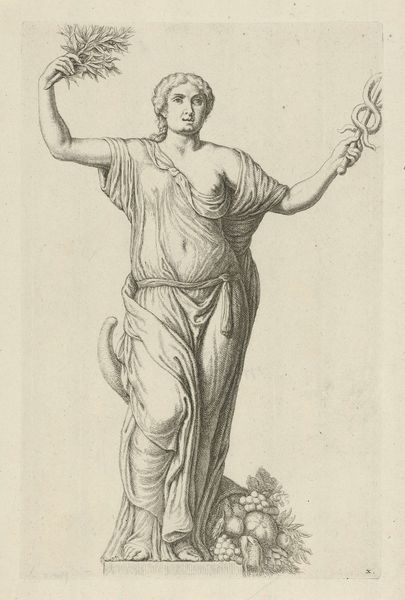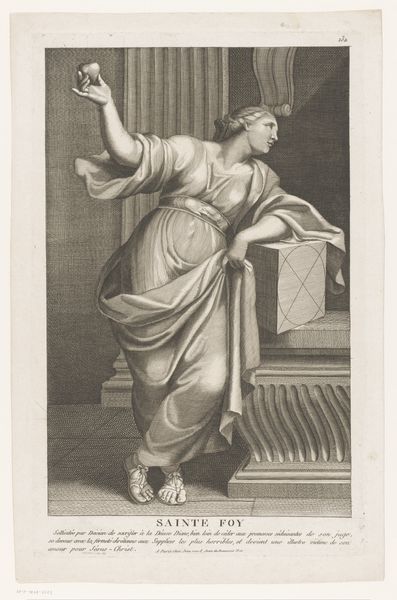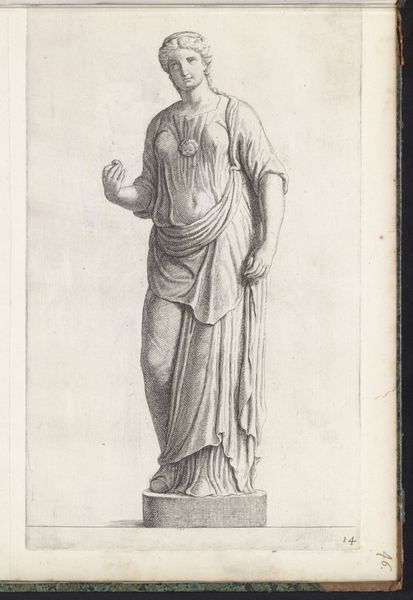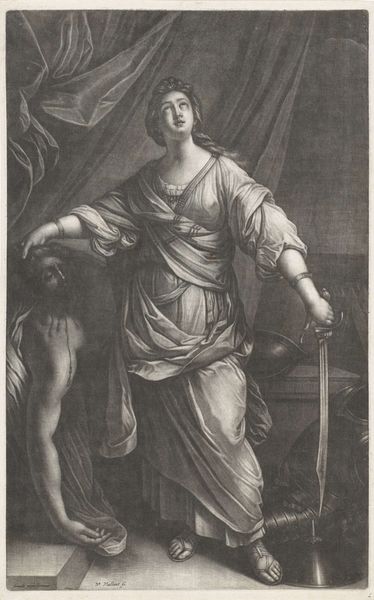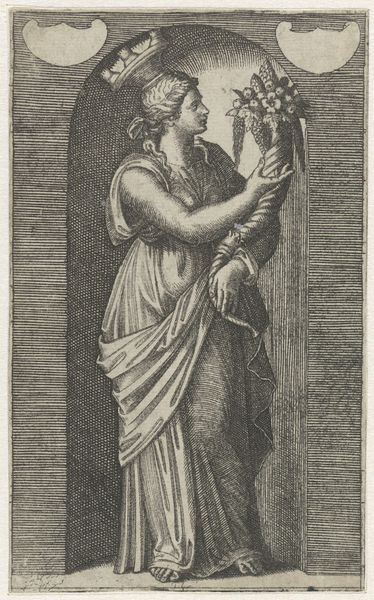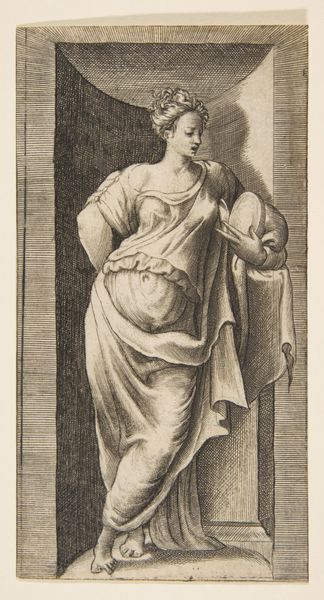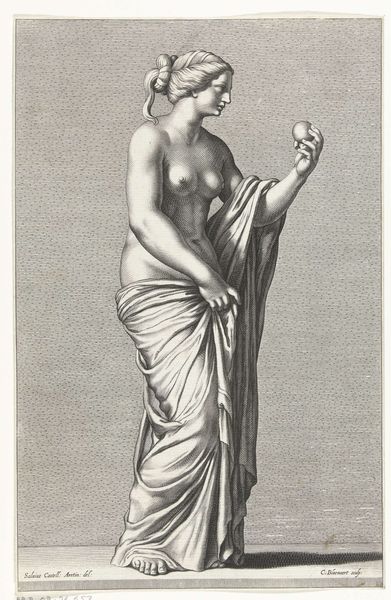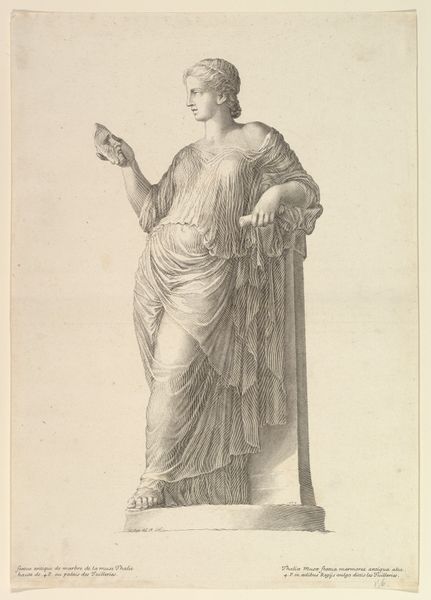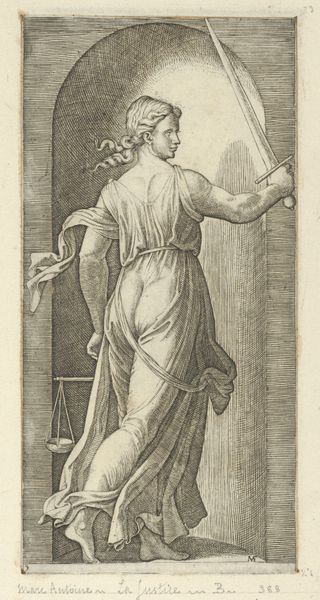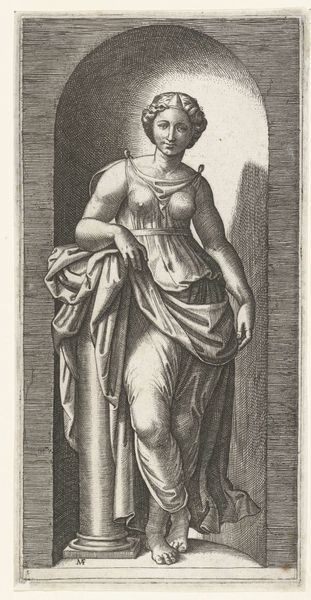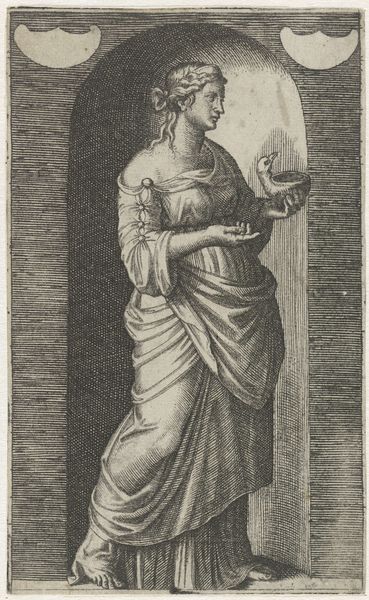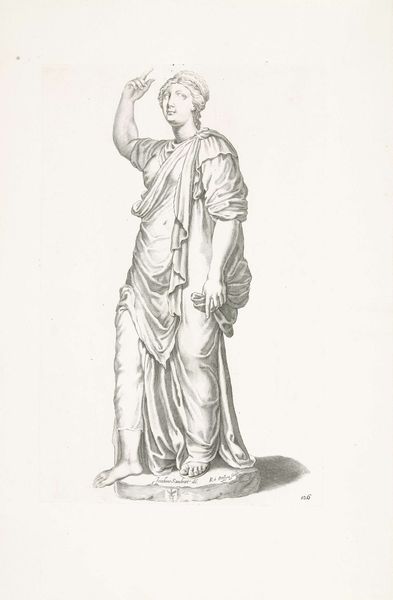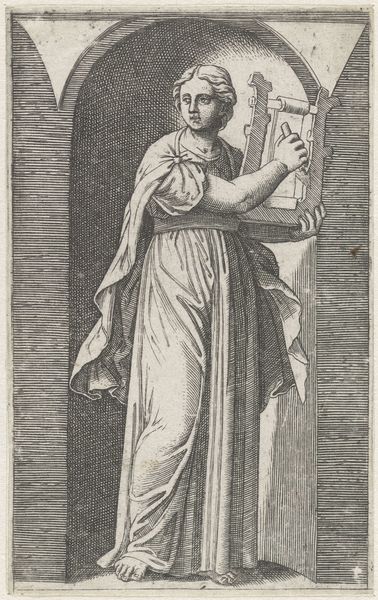
intaglio, engraving
#
baroque
#
intaglio
#
figuration
#
form
#
line
#
history-painting
#
academic-art
#
nude
#
engraving
Dimensions: height 190 mm, width 149 mm
Copyright: Rijks Museum: Open Domain
Curator: Looking at this engraving by Jan van Somer, titled "The Suicide of Lucretia," dated sometime between 1655 and 1700, I’m immediately struck by its somber, almost theatrical quality. The dark lines against the light background give it a stark emotional intensity. Editor: Yes, there’s a definite air of tragedy, isn’t there? I see a woman poised, almost elegantly, before her self-inflicted wound. Considering the context in which it was created, one can't ignore the power dynamics at play. Curator: Exactly! Lucretia's suicide is a pivotal moment in Roman history. According to legend, she was raped by Sextus Tarquinius, the son of the last king of Rome. Her death became a catalyst for the overthrow of the monarchy and the establishment of the Roman Republic. Van Somer captures this loaded narrative within the framework of baroque art, focusing intensely on line and figuration. Editor: So, she becomes a symbol then. A symbol of lost innocence, certainly, but also of defiance. I am drawn to her agency within this tragedy, because it underscores an individual's response against systemic oppression, which continues to be relevant in contemporary discussions about bodily autonomy. Curator: Absolutely. Think about how many times her story has been represented across centuries! Her suicide is frequently portrayed as this act of ultimate shame. But here, through Somer's rendering and understanding the broader social implication of images like this, Lucretia also emerges as an emblem of resistance, inspiring a revolt against tyranny and demanding moral justice. What strikes me is the contrast of this act displayed with near serene resignation. Editor: And that's why images like this remain so powerful and complex. The composition certainly plays a role— the placement within what appears to be an opulent interior gives it this weighty historical framework. Also consider that even now the nude form and depictions of violence are regulated, contextualizing where and how an image can be circulated makes one consider its overall socio-political meaning and effect. Curator: The politics of its imagery, you mean. Yes. Overall, the impact comes not just from what is visually depicted, but from recognizing the legacy of its display, how the production and viewing is framed within societal discourse. Editor: Indeed. Thinking about this further now, I recognize both the artist's intention and its complex cultural effects. Curator: Precisely. A valuable intersection that challenges our perception.
Comments
No comments
Be the first to comment and join the conversation on the ultimate creative platform.
